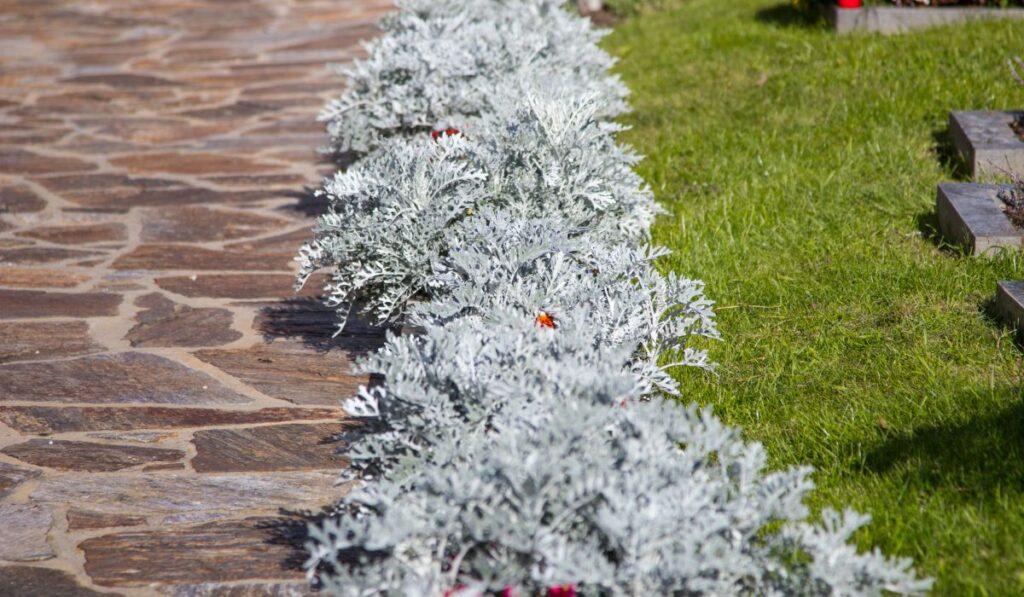Archive for Landscape Maintenance
Saving Water, Beautifying Spaces: Water-Efficient Landscaping Techniques
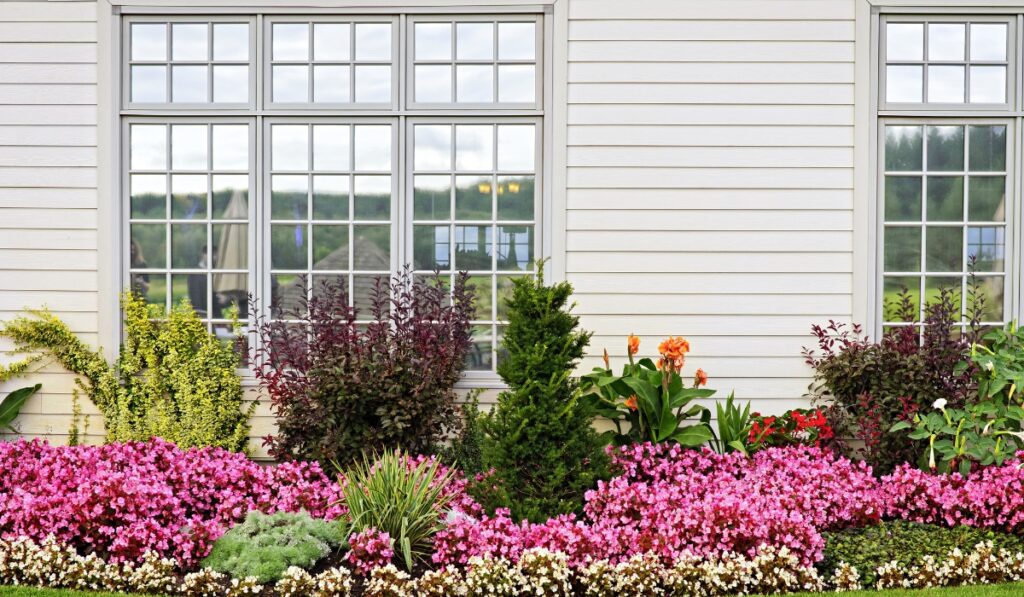
Welcome to the DK Landscaping blog, where we blend beauty with sustainability. In today’s post, we’re diving into the heart of water-efficient landscaping techniques that not only save precious water resources but also transform your outdoor spaces into stunning eco-friendly havens.
Embracing the Basics of Water Efficiency
Understanding Your Landscape’s Needs
Before we start, it’s crucial to understand the unique needs of your landscape. This means assessing soil type, sunlight, and the local climate. By understanding these elements, you can make informed choices that naturally reduce water usage.
The Role of Native Plants
Native plants are the cornerstone of water-efficient landscaping. They’re adapted to the local environment, requiring less water than non-native species. We’ll explore how to select and incorporate these into your design for a resilient and vibrant garden.
Innovative Irrigation Techniques
Drip Irrigation: A Closer Look
Drip irrigation is a game-changer for water efficiency. By delivering water directly to the roots of plants, it minimizes waste and maximizes growth. We’ll guide you through setting up a system that suits your landscape’s specific needs.
Timing is Everything: Smart Irrigation Controllers
Learn how integrating smart irrigation controllers can automate and optimize your watering schedule based on real-time weather conditions, saving water and boosting plant health.
Mulching and Soil Management
The Magic of Mulch
Mulch isn’t just for looks. It plays a pivotal role in retaining soil moisture, regulating temperature, and suppressing weeds. Discover the best types of mulch for your garden and how to apply them effectively.
Soil Amendment Strategies
Healthy soil equals healthy plants. We’ll share tips on improving soil structure and fertility, ensuring your garden thrives while reducing the need for supplemental watering.
Designing with Water Efficiency in Mind
Zoning Your Garden for Water Efficiency
Creating zones in your garden based on water needs can significantly reduce waste. We’ll help you design a layout that groups plants with similar watering requirements together, making your landscape both beautiful and water-wise.
The Beauty of Xeriscaping
Xeriscaping doesn’t mean sacrificing color or variety. Learn how to design a stunning, low-water landscape using drought-tolerant plants and creative design principles.
Beyond the Garden: Rainwater Harvesting
Catching Every Drop: The Basics of Rainwater Harvesting
Rainwater harvesting systems can supplement your water supply beautifully. From simple rain barrels to more sophisticated systems, we’ll show you how to capture and use rainwater effectively in your garden.
The Impact of Water-Efficient Landscaping
Environmental and Economic Benefits
Adopting water-efficient landscaping techniques isn’t just good for the planet—it can also reduce your water bill. We’ll discuss the broader benefits of making these changes, from supporting local ecosystems to contributing to global water conservation efforts.
At DK Landscaping, we believe in creating beautiful, sustainable landscapes that stand the test of time. We hope this guide inspires you to adopt water-efficient practices that make a difference in your garden and the world. Stay tuned for more tips and insights on eco-friendly landscaping. Contact us today if you need help with your landscaping!
Seasonal Landscaping: Tips for Maintaining Your Yard
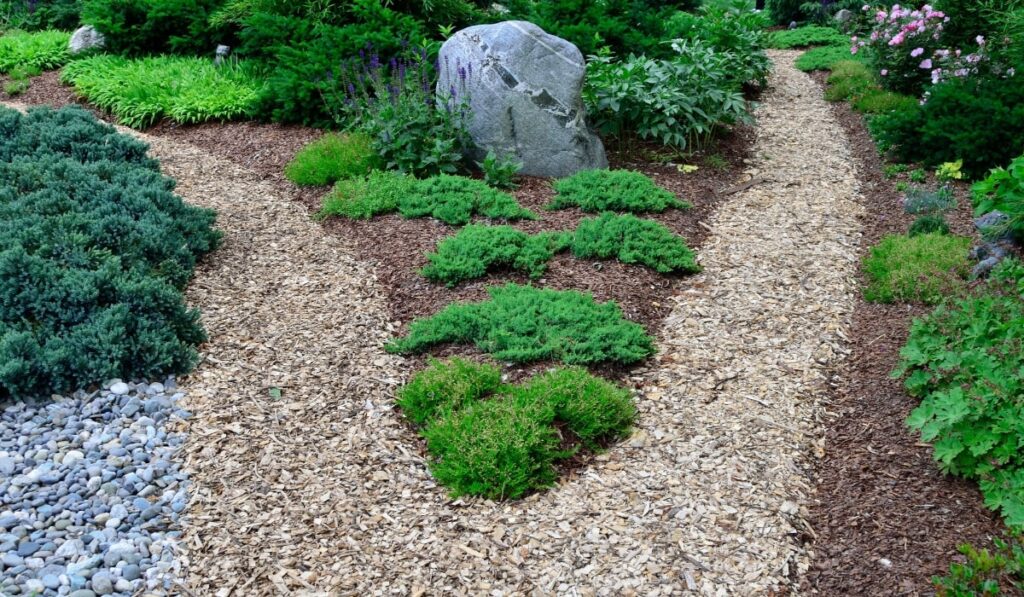
Seasonal landscaping is a practice that involves designing and maintaining outdoor spaces to reflect the changing seasons. This type of landscaping can be used to create a visually appealing and functional outdoor space that is suitable for different seasons throughout the year. Seasonal landscaping involves the use of plants, flowers, and other outdoor features that are specific to each season.
One of the main benefits of seasonal landscaping is that it can help to create a sense of continuity and connection between the indoors and outdoors. By incorporating seasonal elements into a landscape design, homeowners can create a seamless transition between their indoor and outdoor living spaces. This can help to create a more inviting and welcoming environment for guests, as well as a more enjoyable outdoor living experience for the homeowner.
Another benefit of seasonal landscaping is that it can help to increase the value of a property. A well-designed and maintained outdoor space can significantly enhance the curb appeal of a home, which can make it more attractive to potential buyers. Additionally, seasonal landscaping can help to create a unique and memorable outdoor space that sets a home apart from others in the area.
Understanding Seasonal Landscaping
Benefits of Seasonal Landscaping
Seasonal landscaping is an important aspect of maintaining a healthy and beautiful outdoor space. By changing the plants and design elements throughout the year, homeowners can ensure that their yard remains visually appealing and functional. Some benefits of seasonal landscaping include:
- Improved curb appeal: By changing the look of the yard throughout the year, homeowners can improve curb appeal and make their property stand out in the neighborhood.
- Increased property value: A well-maintained yard can increase the value of a property, and seasonal landscaping is an easy way to keep the yard looking its best.
- Enhanced outdoor living: By incorporating seasonal elements such as outdoor seating, lighting, and fire pits, homeowners can create an outdoor living space that can be enjoyed throughout the year.
Key Seasonal Changes
In order to create a successful seasonal landscape, it is important to understand the key changes that occur throughout the year. Some of the most important seasonal changes include:
- Spring: In the spring, homeowners should focus on planting new flowers and shrubs, and preparing the yard for the growing season. This is also a good time to clean up any debris that may have accumulated over the winter.
- Summer: During the summer, homeowners should focus on maintaining the yard and keeping it healthy. This may include watering, fertilizing, and mowing the lawn on a regular basis.
- Fall: In the fall, homeowners should prepare the yard for the winter months by raking leaves and removing any dead plants or debris. This is also a good time to plant bulbs and other plants that will bloom in the spring.
- Winter: During the winter, homeowners should focus on protecting their plants and yard from the cold weather. This may include covering plants, removing snow, and pruning trees and shrubs.
By understanding the key seasonal changes and benefits of seasonal landscaping, homeowners can create a beautiful and functional outdoor space that can be enjoyed throughout the year.
Planning Your Seasonal Landscaping
When it comes to landscaping, planning is crucial to ensure that your outdoor space looks beautiful all year round. This section will provide you with a guide on how to plan your seasonal landscaping, including tips on spring planning, summer upkeep, autumn transition, and winter preparation.
Spring Planning
Spring is the perfect time to start planning your seasonal landscaping. Begin by assessing your outdoor space and identifying any areas that need attention. Consider adding new plants, flowers, or shrubs to add color and texture to your garden. You may also want to consider adding new features such as a water fountain or a seating area.
It’s important to keep in mind the climate and soil type of your area when selecting plants. Make sure to choose plants that are suitable for your climate and soil type to ensure that they thrive. Also, consider the amount of sunlight your garden receives and choose plants accordingly.
Summer Upkeep
Summer is the time when your garden is in full bloom. It’s important to keep up with regular maintenance during this season to ensure that your garden stays healthy. This includes watering your plants regularly, removing weeds, and pruning any overgrown branches.
You may also want to consider adding mulch to your garden beds to help retain moisture and prevent weed growth. Additionally, consider adding a layer of fertilizer to promote healthy growth.
Autumn Transition
As the weather begins to cool down, it’s time to prepare your garden for the fall season. This includes removing any dead plants, leaves, and debris. You may also want to consider adding new plants that thrive in cooler temperatures such as mums or asters.
It’s also a good time to prepare your garden for the winter season by adding a layer of compost or mulch to protect your plants from the cold weather.
Winter Preparation
Winter can be harsh on your garden, so it’s important to prepare it for the colder months. This includes removing any dead plants, leaves, and debris. You may also want to consider covering your plants with burlap to protect them from frost and snow.
It’s also important to drain any water features and store outdoor furniture to protect them from the elements. Finally, consider adding some winter interest to your garden by adding evergreen plants or winter-blooming flowers.
By following these tips, you can ensure that your garden looks beautiful all year round. Happy landscaping!
Seasonal Planting Strategies
Selecting Plants for Each Season
When it comes to seasonal landscaping, selecting plants that are suitable for each season is crucial. Different plants thrive in different seasons, so it is important to choose those that will grow well during the time of year you want them to bloom.
For example, in the spring, you might consider planting bulbs such as tulips, daffodils, and hyacinths. These plants are perfect for adding color and vibrancy to your garden after a long, cold winter. In the summer, you might opt for flowering annuals, such as petunias, marigolds, and zinnias, which will add a burst of color to your garden beds.
In the fall, you might choose to plant mums, asters, or other autumn-blooming perennials. These plants will add warmth and depth to your garden as the temperatures begin to cool. And in the winter, you might consider planting evergreens, such as holly, spruce, or pine, which will provide a beautiful backdrop for your winter landscape.
Rotating Crops and Flowers
Another important strategy for seasonal landscaping is rotating crops and flowers. This involves planting different crops or flowers in the same location each year, which helps to prevent soil-borne diseases and pests from building up in the soil.
For example, if you planted tomatoes in a particular garden bed one year, you might choose to plant cucumbers or peppers in that same bed the following year. This will help to keep the soil healthy and productive, while also ensuring that your plants have the best chance of thriving.
By following these seasonal planting strategies, you can create a beautiful and thriving landscape that changes with the seasons. Whether you’re planting bulbs in the spring or evergreens in the winter, there’s always something new and exciting to look forward to in your garden.
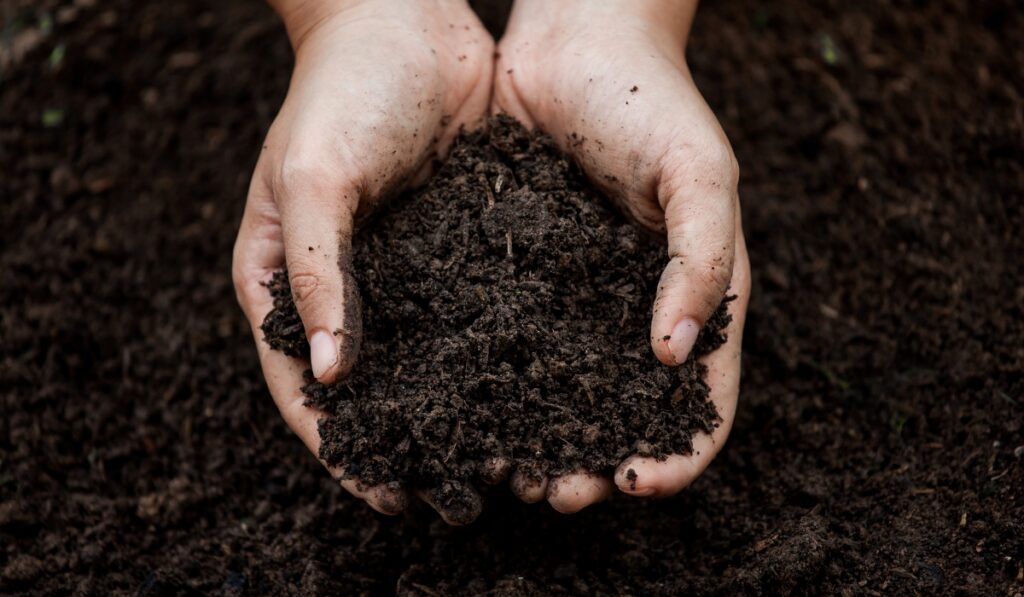
Maintenance and Care
Soil Health and Fertilization
Maintaining healthy soil is crucial for the success of any landscaping project. Soil should be tested before any fertilization is applied to determine its nutrient content. Fertilizers should be chosen based on the soil’s needs and applied according to the manufacturer’s instructions. Organic fertilizers are a great option for those who want to avoid synthetic chemicals. Mulching can also help improve soil health by retaining moisture and adding organic matter.
Pruning and Weeding
Pruning and weeding are essential for maintaining the appearance and health of a landscaped area. Regular pruning helps to shape plants, remove dead or damaged branches, and promote healthy growth. Weeding helps to control the spread of unwanted plants and prevent competition for resources. It is important to use the proper tools and techniques when pruning to avoid damaging the plant.
Irrigation and Water Management
Proper irrigation and water management are critical for maintaining a healthy landscape. Overwatering can lead to root rot and other issues, while underwatering can cause plants to wilt and die. Watering should be done in the early morning or late evening to minimize evaporation. Drip irrigation systems are a great option for those who want to conserve water and minimize runoff. It is important to monitor soil moisture levels and adjust watering schedules accordingly.
Frequently Asked Questions
What are the best months to schedule landscaping services?
The best months to schedule landscaping services depend on the type of service needed. For planting, the ideal time is usually during the spring or fall seasons when the temperatures are mild. For lawn care, the best time is during the summer months when the grass is actively growing. It is recommended to consult with a professional landscaper to determine the best time for specific services.
How can I maintain my landscape throughout the year?
Maintaining a landscape throughout the year requires regular care and attention. This includes watering, fertilizing, pruning, and weeding. It is also important to monitor the health of plants and address any issues promptly. A professional landscaper can provide guidance on the specific care requirements for different types of plants and landscapes.
What are cost-effective strategies for beautiful landscaping?
Some cost-effective strategies for beautiful landscaping include using native plants, incorporating mulch to retain moisture and suppress weeds, and using low-maintenance plants. It is also important to plan and design the landscape carefully to ensure that it is functional and visually appealing.
How should I prepare my garden for the spring season?
Preparing a garden for the spring season involves cleaning up the landscape, removing any dead or damaged plants, and preparing the soil for planting. It is also important to fertilize and prune plants as needed. A professional landscaper can provide guidance on the specific steps needed to prepare a garden for the spring season.
What is included in a typical landscape maintenance checklist?
A typical landscape maintenance checklist includes tasks such as mowing the lawn, trimming shrubs and trees, fertilizing, watering, and weeding. It may also include tasks such as pest control, pruning, and mulching. A professional landscaper can provide a customized maintenance checklist based on the specific needs of the landscape.
What steps are necessary to winterize my landscaping?
Winterizing a landscape involves preparing plants and trees for the colder temperatures. This includes trimming back any dead or damaged branches, wrapping delicate plants with burlap or other protective material, and applying a layer of mulch to protect the soil. It is also important to turn off and drain any outdoor water features to prevent damage from freezing temperatures. A professional landscaper can provide guidance on the specific steps needed to winterize a landscape.
Tree Maintenance – Get Trees Maintained To Ensure Safety
Are you a garden enthusiast who has incorporated several trees within your landscape? Or maybe your home is located near wooded surroundings where trees are a prominent feature? Well if so it may probably be time for you to get started with tree maintenance.
Even though most people don’t like the hassle of carrying out tree maintenance this practice is considered to be extremely essential as it serves to eliminate the threat of damage to property or serious injury come winter.
Tree Maintenance Is A Great Way To Manage Tree Overgrowth
 Despite all the great benefits that having trees in our surroundings provide, they can sometimes grow menacingly out of control. Some may grow tall reaching unbelievable heights while some can spread widely with huge amounts of foliage but regardless of the form of growth they possess they will most likely be a challenging task to manage.
Despite all the great benefits that having trees in our surroundings provide, they can sometimes grow menacingly out of control. Some may grow tall reaching unbelievable heights while some can spread widely with huge amounts of foliage but regardless of the form of growth they possess they will most likely be a challenging task to manage.
This can not only present several challenges but some dangers as well. So to properly manage this issue pruning, topping, shaping or sometimes even removing trees are great ways in which people can maintain and keep control of trees in their area.
Tree Maintenance Provides Additional Security
Despite the fact that trees help to beautify and improve our surroundings their maintenance is essential to the security of homes and businesses. You see when trees grow out of control they tend to accumulate bushes and overgrowth making it easy for an intruder to conceal themselves.
So maintaining trees and keeping them well groomed and at an appropriate height can serve to keep homes and businesses safe while offering clean, unobstructed, surroundings.
Need Help Getting Your Trees Maintained Before Winter? Let DK Landscaping Inc. Give You A Hand!
With winter just around the corner getting trees in your surroundings maintained is something you should not hesitate to do especially since weather can get a bit extreme during this time. Well here at DK Landscaping we’re aware of the resources and effort
required to maintain trees which is why we’d be happy to come in and give you a hand with any tree maintenance you need performed.
Here at DK Landscaping we like to say that “We like Jungles” as no job is too big or too small for us and we aim to provide the highest quality landscape and gardening services to all clients. Our tree maintenance services are very affordable and we work with clients to manage any type of surroundings. Give us a call at: (707) 280-3632 or visit our website:dklandscaping.com for more information.
Protect Gardens In Winter By Mulching
Winter is just around the corner and its important to protect your garden from the most unbearable conditions. You want to do all you can to prepare and offer protection for when that time arrives. How do you protect gardens from the snow and ice? The answer is easy, mulching. In preparation for winter this practice is an excellent way to protect your plants during this cold period.
Mulching Helps Plants To Stay Warm In Cold Conditions
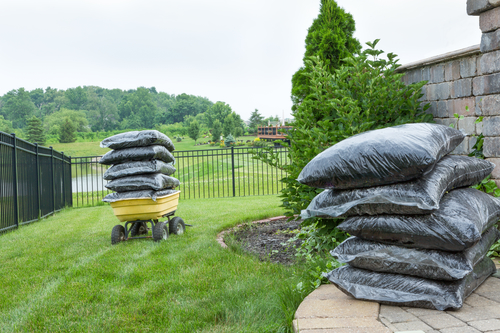
A responsible gardener would ensure that they mulch their plants as a preventative maintenance measure. Generally mulching plants in extremely cold conditions helps to provide an effective type of insulation that prevents them from freezing and thawing rapidly. It also serves to prevent plants from becoming shallow-rooted plants and bulbs caused when plants are lifting out of the soil which can damage delicate grafts.
If you experience brutal winters or nighttime temperatures below 20 F. (-8 C.) mulching plants in your garden may be the smartest decision.
Effective Winter Mulching Tips
Mulching is a great way to keep your plants active throughout the winter season and prevents them from becoming dormant. For instance if active plants that aren’t mulched decide to put out new growth at this time there’s a possibility that plant tissues can become damaged by nighttime frost. This can create entry points for many dangerous fungal and bacterial pathogens that are capable of causing serious harm to plants. In a nutshell mulching provides adequate protection to plants ensuring they bloom free of pests.
Gardeners can make use of a variety of organic materials suitable for winter protection including hardwood bark, straw, chopped corn cobs, grass clippings and pine needles. Nevertheless be sure to keep mulch at least one inch away from crowns and stems when making applications to prevent choking, damage or rot.
Gardeners should also take care to remember that organic mulches carry a low nitrogen content therefore before laying mulch you should first fertilize soil with a high-nitrogen product such as blood meal or fish meal to increase nitrogen levels in the soil.
Need Help With Winter Mulching? Dk Landscaping Inc. Is Here To Help
If you don’t know what to do or need help with your winter mulching don’t hesitate to give us a call at DK Landscaping Inc. at: (707) 280-3632 we’d be happy to come and give you a hand.
Here at DK Landscaping we strive to offer the highest quality landscaping and gardening services in Northern California.. Give us a call today or you can contact us online for more information on how you can take better care of your garden.
Tips to Get Gardens Ready for Winter
With the year slowly coming to an end and winter quickly approaching the outdoors can turn into a dull and inhospitable place forcing most people to remain indoors however, for garden and landscape enthusiast alike this time of year is the ideal time to prep gardens, lawns and surrounding landscapes for the upcoming growing season.
Keep Gardens in Shape During Winter

In the fall or just before winter most trees lose their foliage however at this time maintenance practices like pruning or trimming are encouraged during the latter months of the year as during this time of dormancy the majority of hedges, shrubs and trees can be pruned or trimmed without causing damage to the plant or tree.
This practice not only eliminates dead cumbersome branches from trees and plants but it also helps to improve their growth and shape while maintaining the general health of gardens.
As for the multitude of leaves that constantly fall and cover gardens at this time of year making it a practice to regularly clean gardens is extremely important as it allows garden beds and lawns to receive adequate sunlight which helps to promote optimal growth and health.
Another very important factor that gardeners should consider when preparing gardens for winter is the protection of plants from potential damage or destruction. Given the extreme conditions that come along with winter one clever tip that has proven to be an effective approach for protecting gardens during this extreme period is mulching.
Mainly used to help soil to retain moisture, regulate soil temperature and suppress weed growth mulching is also a great way to shield and protect plants against the hostile conditions of winter. Planting beds should be mulched at a depth of 1.5 – 2 inches to ensure plant roots remain the right temperature as well as to offer the right amount of protection from any potential damage.
Contract a Professional Landscaping Service
Not everyone may have the equipment to carry out trimming and pruning effectively and as for large, dead, trees and decayed branches hanging around gardens it’s best to contract trained professionals to manage tasks such as these since decayed trees and branches can pose serious threats of injury. Therefore contracting a professional landscaping service to manage tasks that might require equipment and trained personnel is the safest option.
Need Help with Preparing Your Garden for Winter?
Here at DK Landscaping Inc. we understand how tedious it can be to manage gardens on your own however we like to say that “We like Jungles” and we’d be happy to come in and assist you with all your garden preparations for winter.
We aim to provide the highest quality landscaping and gardening services to all clients. Our services are very affordable and we work with clients to manage any type of surroundings. Give us a call at: 707 217-6508 or visit our website: dklandscaping.com for more information.
How Mulching Can Benefit Your Garden
In seeking to maintain or improve the growth and health of trees, plants and flowers in gardens there are several practical, techniques that gardeners can apply. One approach that has proven to be very effective in helping to promote the health of gardens is mulching.
Mulching can be used for Multiple Purposes
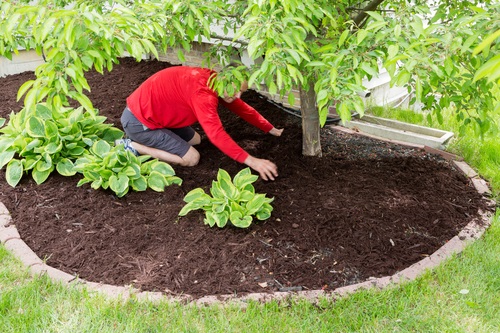
Mulching refers to the practice of applying a layer of material to the surface of soil. Mainly it is used to improve soil health and fertility, retain soil moisture and reduce weed growth. Mulching can be utilized in several different, areas including vegetable gardens, flower beds and surrounding landscapes. It is so effective that it allows gardeners to spend less time plucking up weeds, watering gardens and fighting pests.
Apart from its main uses mulch can also be used to lend additional support to plants by helping to stabilize them as well as help to enhance the visual appeal of gardens.
Types of Mulch Gardeners can Utilize when Mulching
When mulching gardens there are two basic kinds of mulch that gardeners can use these are organic or inorganic mulches. Generally organic mulches consist of numerous materials including straw, grass clippings, chopped leaves, shredded bark, wood chips and sawdust and inorganic mulches are mainly comprised of gravel, stones, geotextiles and black plastic.
Nevertheless both types of mulch can be used to deter weed growth and improve soil quality however with organic mulches soil is improved gradually as the organic material decomposes while inorganic mulches don’t.
Important Tips to Consider
If mulching to combat weeds there are a few things that people should keep in mind if it is to be done properly and effectively. Firstly it is recommended that mulch be laid down over soil that has already been weeded and secondly it should be laid down thick enough to discourage the reappearance of new weeds.
Considering this the thickness of mulch placed over soil should range around 4- 6 inches though a 2- 3 inch layer normally suffices in areas that have more shade and weed growth is not as prevalent.
Another very essential tip gardeners can utilize when mulching is the addition of nitrogen products to soil. Products like blood meal or fish meal can be used and should be applied before the mulch is laid as organic mulches usually have a low nitrogen content and this can help to increase nitrogen levels in soil so that plants get the desired nutrients.
Nevertheless one of the most important things that gardeners should take care to remember when mulching is how they place the mulch. When laying down mulch it should be kept no less than an inch away from crowns and stems of plants. This is mainly because wet mulch resting against the stems of flowers and vegetables can cause rot. Therefore it would be wise to ensure that mulch is placed at the appropriate distance to prevent this from happening.
Need Help with Mulching Your Garden?
If you don’t know what to do or need help mulching a large garden area don’t hesitate to give us a call at DK Landscaping Inc. at: (707) 280-3632 we’d be happy to come and give you a hand.
Our services are prompt and professional and our prices affordable. Here at DK Landscaping we strive to offer the highest quality landscaping services to clients so give us a call today or you can check out our website: dklandscaping.com to have a look at the services we offer.
Landscape Maintenance – Just Right this Thanksgiving
Thanksgiving is just around the corner and its time to get your home spruced up to meet all the guest that will be visiting during this wonderful time of year. In all the excitement and all the things to do, you should never forget your landscape maintenance. Why you might ask? Well its your landscape that meets the eye of your guest first and you want them to enjoy every inch of your surroundings, so you better get started right now!
Whether its the pesky mother-in-law or the who’s of who that you’re trying to impress, don’t hesitate to get your lawn in shape by hiring the experts in lawn care and maintenance. Now here’s the deal. If you’re sure you want to get all things in shape for your thanksgiving home gathering then you’ll need to understand a few things first.
What Real and Professional Landscape Maintenance Involves

Not everybody knows how to treat a lawn and get it looking its best and here’s where we come in. You see a lustrous landscape will require some degree of attention and education. Now as seasons change so do maintenance techniques and in the fall best practices include:
- Watering and Mowing
- Soil Aeration
- Fertilizing during Fall
- Filling in Bald Spots
- Weed Control
Its very important that you continue to water and mow your lawn, as needed, throughout the fall. Secondly expert lawn care providers will know that soil aeration is critical especially during fall. When this is done oxygen, water and fertilizer can easily reach the root of your grass.
The third important aspect of maintenance is the application of fertilizer during the fall. This action delivers essential nutrients which gives your grass the ability to grow deep roots now and also keep nutrients in the tank until next spring season. The filling of the bald patches is next on the list at number four and we use a special lawn repair mixture that will give the garden a full body and a great look that will make your neighbors die for.
Last but not least is weed control and most herbicide manufacturers recommend applying the weed killer during early-to-mid autumn. Apply this now and your garden will be weed free even next spring.
There’s no doubt that we can give you all the assistance and lawn care advice needed. Contact us if you want to enjoy the benefits of our expert advice and reap the rewards of real landscape maintenance.
Fall into These Horticulture Habits for Winter
Shuttering your garden for the fall is easier than you might think. You probably already know to clean up any debris and uproot weeds that love nothing more than to spread, but there are a few more horticulture steps that can really put you on the right path for a renewal in spring and bounteous summer harvest.
Get Your Garden Cleaned Up
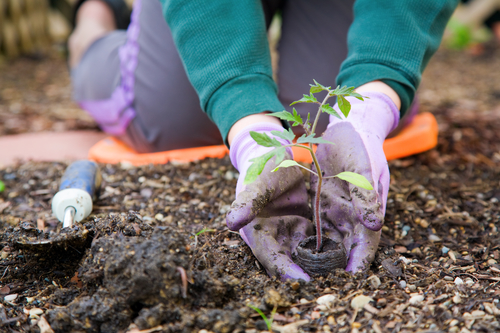
It might be tempting to dust off your knees, climb out of your garden, and let nature take its chilly winter course. The thing to realize is that while that might be easier now, you could be setting yourself up for more work later. Prepping your soil – and perhaps planting a cover crop – and replenishing your mulch can make life so much easier in early spring next year.
You want to remove any weeds you find or decayed plants before your ground gets too cold. A professional landscaping company can help you remove weeds, prune perennials, and even turn your fall leaves into mulch and compost that nourishes your soil year round.
If you’re really strapped for time, though, and you don’t want weeds to grow then put plastic or cardboard over existing weeds and leave that cover on through the winter to keep weeds from spreading. Or call on DK Landscaping and get landscaping experts to clean up your garden in time for winter.
Making a light pass of your garden with a tiller can also clear your garden of insects that plan on overwintering (spending the winter) in your soil. Insects like grubs and beetles want to hunker down and spend the winter in your soil, but these same insects can ruin your plants and screw up your soil!
A Horticulture Essential: Prepping Your Soil for Winter
The plants in your garden are actually more complex than they might look at first glance. When your garden’s soil doesn’t have the nutrients that your plants need to grow to their full potential, they emit stress hormones that can make it easier for nearby insects or diseases to take hold of your garden. That’s obviously not what you want.
Late fall might actually be the best time of the year to call on a company like DK Landscaping to test your soil to make sure that it contains the right kind of nutrients to promote plant growth. DK’s horticulture experts will look to see how much organic matter is in your soil, gauge the level of mineral nutrients in your soil that your plant roots can absorb, and measure levels of potassium and phosphorous.
(Nitrogen, phosphorous, and potassium are your soil’s three main macronutrients. Potassium helps for water retention in your garden and nitrogen and phosphorous ensure that you get early growth and healthy roots.)
That might sound really complicated, but a simple test can tell you a whole lot. Something as simple as adding lime to your soil can help bring your soil’s pH into balance too. Adding lime is also really good to do in late fall because it takes a while for the soil to absorb it. Time is your friend in the winter months when your garden is basically laying fallow.
Leaves are Solid Gold for Your Garden
Once you’ve tested your soil, you’re going to want to apply some kind of mulch (goes on top of soil) or compost (goes into soil). Chopped-up leaves sprinkled over your garden will enrich your soil, improve water retention, and stop weeds dead in their tracks.
DK Landscaping can handle more complex horticulture and help you with regular garden maintenance, irrigation, and general landscaping in fall and throughout the year.
Pro Tips For Sustainable Yard Maintenance
A well-maintained, healthy, and vibrant yard is a joy to look at and a pleasure to enjoy. It boosts curb appeal, increases property value, and contributes to community pride. If you’re looking for the best ways to maintain a beautiful yard without wasting resources or harming the environment, then it’s time to start thinking sustainably.
By implementing sustainable yard maintenance practices, you can save water, money and protect the environment from ecological damage. Whether you’re a developer looking to uphold the value of your properties or a homeowner seeking to create the perfect entertaining spot, these pro tips will help you take care of your yard in a responsible way:

Design a Water-Wise Landscape
Water scarcity is an increasing problem in parts of the world, with over two-thirds of the world’s population experiencing severe water scarcity for at least one month each year. This is why we must consider sustainable ways to keep your yard lush year-round.
You can conserve water used to maintain your yard by:
- Reducing and reusing water
- Increasing surface coverage
- Investing in an efficient irrigation system
- Choosing drought-resistant plants
- Incorporating rainwater harvesting systems
But before you start, it’s important to create a plan that takes into account the type of soil, climate, and region you live in. Here’s where a landscape design professional specializing in creating beautiful, water-saving yards comes in.
An experienced yard maintenance Rohnert Park landscaper will consider the Sonoma-Marin Saving Water Partnership design standards to create a sustainable and water-wise landscape that enhances the beauty of your outdoor space.
Practice Regular Yard Maintenance
If you want a yard that looks picture-perfect all the time, then regular maintenance is essential. You don’t have to invest a ton of money – there are sustainable ways to make sure your yard is thriving:
Mowing Your Lawn
Regularly mowed grass will stay healthier than grass allowed to overgrow and go weeks between mowings. Sustainable yard maintenance means ensuring your blade is sharp and not cutting off more than 1/3 of the grass blade at any given time.
Edging Your Yard
Have you ever noticed how professional landscapers make those crisp borders between the lawn and surrounding beds? That’s because they’re adept at using sophisticated edging tools for precision work around gardens, pathways, and driveways to give the yard distinction between different landscape design elements.
Pruning & Weeding Your Yard
Regular pruning removes dead or diseased branches to promote the healthy growth of flowering plants and vegetation in your garden. As far as weeds go – those pesky little buggers can sprout up even after you think you’ve gotten rid of them! To prevent weeds from regrowing and keep plants looking their best all season long, consider hiring a landscaping company with access to sustainable weed control methods like mulching.
Mulch It Up
Mulching can help reduce water loss due to evaporation and keep weeds from growing in between plants, which helps prevent competition for resources like water and nutrients from the soil. Top off your mulch every few months since it naturally degrades over time.
Choose Eco-Friendly Products
What you use to treat your plants and lawns can make a huge difference in the eco-friendliness of your yard maintenance routine. Whether it’s weed killer, fertilizer, or bug spray, you should always check the ingredients and assess their environmental impact.
Here are some pro tips for eco-friendly yard maintenance:
- Opt for organic fertilizers that contain composted organic materials such as plant residues, vegetable matter, and manure instead of synthetic fertilizers.
- Try using natural pest control techniques such as installing bird baths to attract predatory birds that eat harmful insects, companion planting (growing certain plants together to ward off pests), and using sticky traps instead of chemical pesticides.
- Request the landscaper to use slow-release fertilizers with fewer synthetic chemicals and minimally toxic herbicides instead of traditional products filled with harsh chemicals, which damage the environment in the long run.
Repair and Replace When Necessary
Sometimes, despite our best efforts, certain things in your yard just won’t last. Whether it’s a badly rusted sprinkler head or dying shrubs and trees, it pays to be proactive and invest in repairs or replacements.
The first thing to do is to diagnose the problem. You can do this by evaluating the structure’s condition by checking for signs of decay, metal rust, holes, and gaps in the grass. It’s best to have an expert provide an assessment.
Once you have a professional evaluation, you can decide whether to repair or replace the structure. If the system is relatively new, a repair is advisable. But if the design is over a few years old, you may need to replace it with an updated, much more durable model.
Find Yard Maintenance Services
Pursuing sustainable yard maintenance is easy with the right tips and tricks. Utilizing tools such as water-saving irrigation systems, native plants, and organic fertilizers is key for any Rohnert Park homeowner looking to maintain a beautiful and sustainable outdoor environment.
We provide small-scale and large-scale yard maintenance services focusing on sustainability and efficiency. We understand the importance of using eco-friendly practices while keeping your landscape looking beautiful and healthy year-round! Contact us today for more information about our sustainable yard maintenance services!


